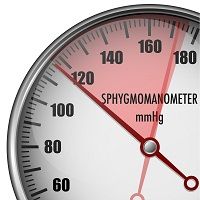Article
Australian Study Questions Validity of At-Home Blood Pressure Devices
Author(s):
A new study analyzing at-home blood pressure devices available for purchase online has found most are not validated—bringing their accuracy into question.

While at-home blood pressure monitoring and the adoption of this technology may show incredible promise, a new study suggested many of those devices may not be validated for accuracy.
Despite focusing on Australian patients, results of the study indicate most home blood pressure monitoring devices purchased on e-commerce sites such as Amazon and eBay have not been tested for accuracy, and their use could lead to inaccurate readings and inappropriate treatment.
“If the devices haven’t been properly validated for accuracy, treatment decisions could be based on incorrect information. We found non-validated devices dominate the Australian marketplace, which is a major barrier to accurate blood pressure monitoring and cardiovascular risk management,” said lead investigator James Sharman, PhD, deputy director at the Menzies Institute for Medical Research at the University of Tasmania in Australia, in a statement.
With hypertension the most prevalent cardiovascular risk factor in the world and at-home blood pressure monitoring becoming more common than ever thanks to advances in technology, Sharman and a team of colleagues designed the current study to assess the validity of home blood pressure devices available for purchase online. Included in the investigators’ analysis were upper arm cuff, wrist cuff, or wrist-band wearable devices that claim to measure blood pressure in an automatic or semiautomatic manner.
In total, investigators identified 4301 items available for purchase from 59 unique online businesses. After screening and exclusion of duplications, a total of 972 unique blood pressure devices from 59 online businesses remained for inclusion. Of these, 278 were upper arm cuffs, 162 were wrist cuffs, and 532 were wrist-band wearable devices.
For the purpose of the analysis, investigators considered a blood pressure device to be validated if it met 1 of 2 criteria. The first criterion was passing a validation study verified by internationally recognized validation protocol for measurement of blood pressure in the general population and the results were published in a peer-reviewed journal or peer-reviewed database. The second criterion applied if the core technology was claimed by the manufacturer to be identical to a device that had previously passed a validation study—investigators referred to this as claimed equivalence.
Upon analysis, 6.6% (n = 64) of the devices met the investigators’ criteria for validation. Investigators noted 26 devices met the first validation criteria while 38 claimed equivalency. Of the 64 devices that met criteria for validation, 51 were upper arm cuffs and 13 were wrist cuffs.
When examining the 59 businesses, 16 were classified as pharmacies, 20 as medial, 5 as general retail, and 18 as e-commerce websites. The analysis revealed 92.4% of devices were stocked by international e-commerce sites such as eBay and Amazon but only 5.5% of these devices met validation criteria. Of note, results indicated validated devices were more expensive (IQR 101.1 [75.0-151.5]) than nonvalidated devices (67.4 [30.4-112.8]).
“International policies need to be strengthened to ensure that home use medical devices are rigorously tested for accuracy before being cleared for sale by regulatory authorities,” Sharman said. “Currently, manufacturers of blood pressure devices conduct their own accuracy testing, an honor system with potential real-life consequences for patients.”
This study, “Nonvalidated Home Blood Pressure Devices Dominate the Online Marketplace in Australia,” was published in Hypertension.




